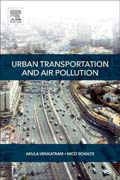
Urban Transportation and Air Pollution synthesizes the state-of-the-art methods for estimating near-road concentrations of roadway emissions. The book provides the information needed to make estimates using methods based on a minimal set of model inputs that can be applied by a wide range of users in many situations. The book begins by discussing the methods to estimate traffic emission under numerous urban driving conditions, then explores the uncertainty of emission models because real-world emissions can vary significantly. The book describes the models that account for the effects of road configurations, such as near-road solid barriers. Addressing transportation-related environmental issues are extremely important worldwide as urban areas are constantly searching for ways to mitigate impacts from transportation sources. Dispersion models are critically useful for estimating the impact of roadway emissions in cities, however many are complex and require detailed inputs not often available. Accompanied by an overview of the meteorology that governs dispersion in cities, the book concludes with presenting dispersion models that link traffic emissions with near road concentrations in urban environments. Compiles and synthesizes into one reference the state of the science methods for estimating roadway emissions Demonstrates with clear examples how the modeling methods reduce uncertainties in real-world problems Emphasizes how local-scale, semi-empirical, steady-state modeling can be applied using only a small set of inputsOffers an overview of the meteorology that governs air pollution dispersion in cities INDICE: 1. Introduction 2. Micrometeorology and Dispersion 3. Traffic Emissions 4. Highways and Urban Air Quality 5. Buildings and Urban Air Quality 6. Dispersion Model Inputs 7. Conclusion
- ISBN: 978-0-12-811506-0
- Editorial: Elsevier
- Encuadernacion: Rústica
- Páginas: 224
- Fecha Publicación: 01/06/2018
- Nº Volúmenes: 1
- Idioma: Inglés
